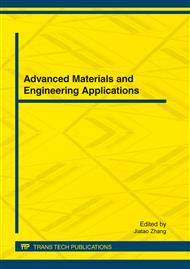p.113
p.121
p.128
p.134
p.140
p.144
p.148
p.153
p.157
Radiation Effect of Metal-Oxide-Semiconductor Structure Irradiated by Electron
Abstract:
×MOS structure has been radiated by electron, dosage is 2×1013 cm-2 ~ 1×1014 cm-2. The interface density distributing in energy band has been tested by quasi-static method. It is found that interface density increase while electron dosage increasing. When dosage arrived to 1×1014 cm-2, interface density arrives to 1013(cm-2eV-1),which is two order of magnitude higher than without irradiation. Further more, the shapes of density increase curve are completely different.
Info:
Periodical:
Pages:
140-143
Citation:
Online since:
March 2012
Authors:
Keywords:
Price:
Сopyright:
© 2012 Trans Tech Publications Ltd. All Rights Reserved
Share:
Citation:


